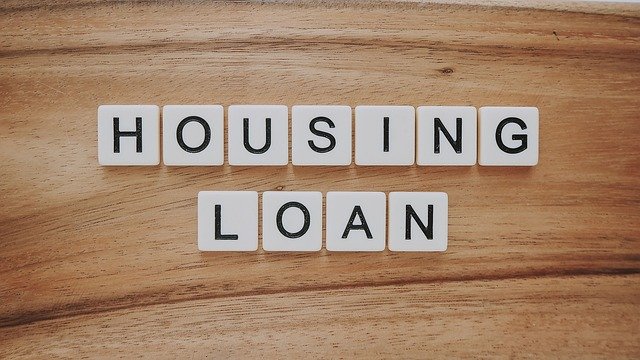Understanding Bad Credit Housing Finance Options and Requirements
Securing a mortgage with poor credit may seem challenging, but various financing options exist for borrowers with less-than-perfect credit scores. Subprime mortgages, government-backed programs, and specialized lending products can help individuals with credit difficulties achieve homeownership. Understanding qualification requirements, interest rates, and available programs is essential for making informed decisions about housing finance with poor credit.

Homeownership remains achievable even with credit challenges, though it requires understanding specialized financing options and qualification strategies. Poor credit doesn’t automatically disqualify potential homeowners from securing mortgages, but it does change the lending landscape and available products.
What Are Bad Credit Home Loans?
Bad credit home loans are mortgage products specifically designed for borrowers with credit scores typically below 620. These loans acknowledge that traditional lending criteria may exclude worthy borrowers who have experienced financial setbacks. Lenders offering these products often consider factors beyond credit scores, including employment history, debt-to-income ratios, and down payment amounts. Government-backed programs like FHA loans accept credit scores as low as 580 with a 3.5% down payment, while VA loans for eligible veterans may have no minimum credit score requirement.
How Do Subprime Mortgage Options Work?
Subprime mortgages function by accepting higher risk borrowers in exchange for higher interest rates and stricter terms. These loans typically feature interest rates 2-4 percentage points above prime rates, reflecting the increased lending risk. Lenders may require larger down payments, often 10-20%, and impose stricter debt-to-income requirements. Some subprime products include adjustable-rate mortgages that start with lower payments but increase over time. Borrowers should carefully evaluate long-term affordability and consider the total cost of homeownership before committing to subprime financing.
What Are Poor Credit Housing Finance Strategies?
Successful housing finance with poor credit requires strategic planning and preparation. Improving credit scores before applying, even by 20-30 points, can significantly impact loan terms and available options. Saving for larger down payments demonstrates financial stability and reduces lender risk. Co-signers with strong credit can help qualify for better rates and terms. Alternative documentation loans may benefit self-employed borrowers or those with non-traditional income sources. Working with housing counselors and exploring local down payment assistance programs can provide additional resources and guidance.
Are There Specific Mortgage Loans for Bad Credit?
Several mortgage programs specifically accommodate borrowers with credit challenges. FHA loans remain the most popular option, requiring minimum credit scores of 580 for 3.5% down payments or 500 for 10% down payments. USDA rural development loans may accept credit scores as low as 640 for automated underwriting or allow manual underwriting for lower scores. VA loans for eligible military members often have flexible credit requirements. Some conventional loans through Fannie Mae’s HomeReady or Freddie Mac’s Home Possible programs accept credit scores as low as 620 with compensating factors.
How Can You Qualify for a Low Credit Score Mortgage?
Qualifying for mortgages with low credit scores requires meeting specific compensating factors and requirements. Lenders typically require stable employment history of at least two years and debt-to-income ratios below 43-50%. Larger down payments, typically 10-20%, help offset credit risk and may unlock better terms. Demonstrating consistent payment history on rent, utilities, and other obligations can strengthen applications. Some lenders accept alternative credit data, including rent payments and utility bills. Pre-approval processes help identify realistic price ranges and required improvements before house hunting.
| Loan Type | Minimum Credit Score | Down Payment | Interest Rate Premium |
|---|---|---|---|
| FHA Loans | 580 (3.5% down) / 500 (10% down) | 3.5% - 10% | 0.5% - 1.5% above conventional |
| VA Loans | No minimum (lender dependent) | 0% | 0.25% - 0.75% above conventional |
| USDA Loans | 640 (automated) / 580 (manual) | 0% | 0.5% - 1% above conventional |
| Subprime Conventional | 500-620 | 10% - 25% | 2% - 4% above prime |
Prices, rates, or cost estimates mentioned in this article are based on the latest available information but may change over time. Independent research is advised before making financial decisions.
Building Credit for Future Refinancing
Borrowers who secure bad credit mortgages should focus on credit improvement for future refinancing opportunities. Making consistent mortgage payments, reducing credit card balances, and avoiding new debt can gradually improve credit scores. Many borrowers successfully refinance within 2-3 years of their initial mortgage, securing better rates and terms. Monitoring credit reports regularly helps identify and dispute errors while tracking improvement progress.
Navigating bad credit mortgage options requires patience, preparation, and realistic expectations about terms and costs. While interest rates and fees may be higher initially, homeownership provides opportunities for building equity and improving financial stability. Working with experienced mortgage professionals who specialize in credit-challenged borrowers can help identify the best available options and guide successful applications through the approval process.



